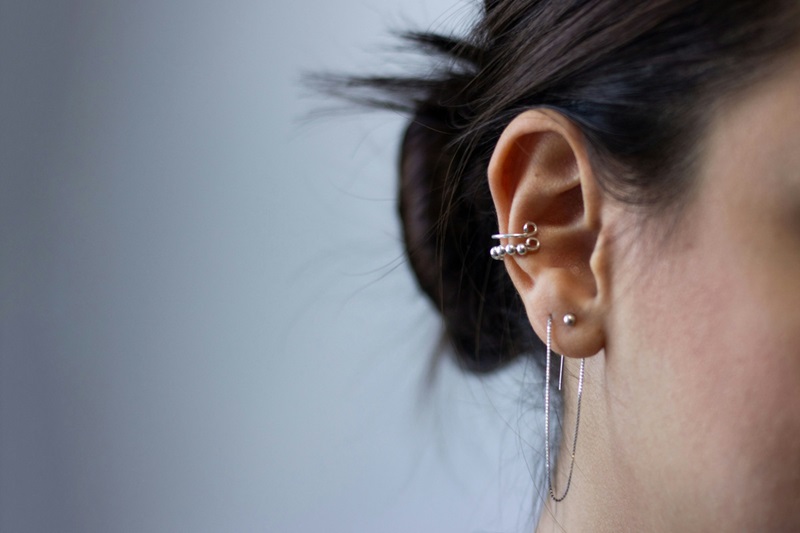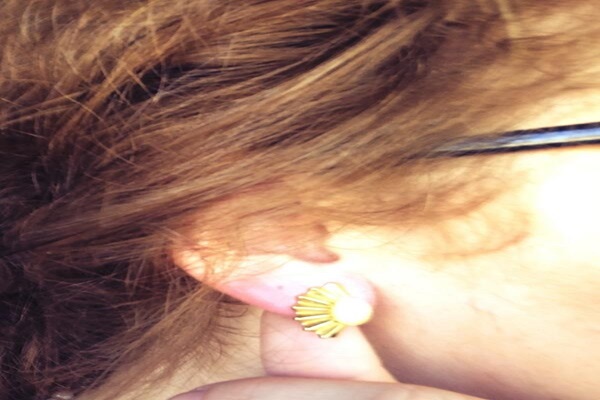Clip on earrings: for many, they evoke images of elegant fashion statements, a convenient alternative for those without pierced ears. Yet, a whisper of doubt often lingers – do clip on earrings hurt? It's a question that has plagued non-pierced ears for generations. While the allure of adorning lobes with sparkling gems or statement pieces remains strong, the fear of discomfort can be a deterrent. This article is here to debunk the myth and equip you with the knowledge to confidently wear clip-on earrings without pain. We will delve into the reasons why some clip-ons cause discomfort, explore the different types of clip mechanisms, and provide expert tips on choosing and adjusting earrings for maximum comfort. By the end, you will be armed with the tools to curate a collection of clip-on earrings that not only elevate your style but also feel like a second skin.

Clip-on earrings offer a convenient alternative for those without pierced ears, but they come with a reputation for discomfort. Understanding why do clip on earrings hurt so much can help you choose more comfortable styles and make adjustments to improve your experience. Here are the main culprits behind clip-on earring pain:
Understanding why do clip on earrings hurt can help you make informed choices when selecting clip-on earrings. The below section talks about different types of clip-on earrings.

Clip-on earrings offer a diverse range of styles and comfort levels thanks to the different types of clip mechanisms available. Understanding these mechanisms can help you choose the most suitable pair for your preferences and ear sensitivity.
When choosing clip-on earrings, consider your personal preferences and ear sensitivity. Experiment with different types of clips to find the ones that feel most comfortable for you. With so many options available, you're sure to find the perfect pair of clip-on earrings to complement your style and comfort needs.

Clip-on earrings offer a fantastic alternative for those without pierced ears, but their reputation for discomfort can be a deterrent. Fear not! With a few simple adjustments and mindful choices, you can know how to make clip on earrings hurt less and turn your clip-on collection into a comfortable and stylish accessory.
Master the Art of Tension Adjustment: Most hinge clips have a small loop or lever. Gently bend it outward to loosen the tension or inward to tighten it. Aim for a snug fit that doesn't pinch. You can also use a small screwdriver (or even a toothpick in a pinch) to turn the screw and adjust the tightness. Additionally, paddle-back clips usually have less adjustability, but you can try gently bending the arms outward to slightly reduce pressure, thereby knowing how to stop clip-on earrings from pinching.
By incorporating these tips into your routine, you can know how to make clip on earrings not hurt and transform your clip-on earrings to a comfortable and stylish accessory. Remember, comfort is key to enjoying your jewelry, so don't settle for anything less than a perfect fit!
That being said, we saw the answer to “do clip on earrings hurt?” question. Clip-on earrings can be a fashionable and pain-free accessory with the right knowledge and adjustments. By understanding the different types of clips, adjusting the tension, and adding padding if needed, you can enjoy wearing clip-on earrings without discomfort.
It can be normal for clip-on earrings to cause discomfort, especially if they are too tight or worn for extended periods, but there are ways to minimize this.
Yes, you can wear clip-on earrings all day, but choosing comfortable styles and taking breaks can help prevent discomfort.
No, clip-on earrings do not pierce your ears; they attach to the earlobe using clips or mechanisms without the need for piercing.
Know about the fascinating history of rings, from ancient rituals and symbolism to contemporary styles and cultural significance across civilizations.
Read MoreExplore the rich history of earrings, from ancient civilizations to modern trends. Know how styles, materials, and cultural significance have evolved over time.
Read MoreKnow the answer to “does titanium rust?” question along with its exceptional corrosion resistance. Get to know more about titanium's properties.
Read MoreExplore titanium rings pros and cons to decide if they're the right choice for you. Read our full analysis, along with essential maintenance tips.
Read More